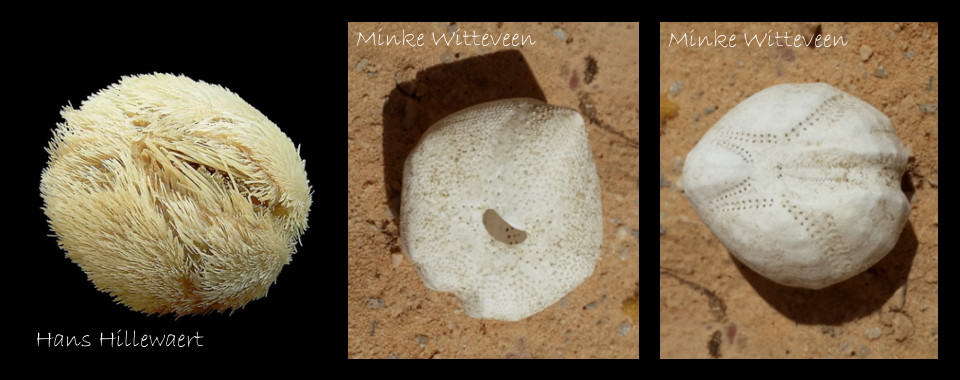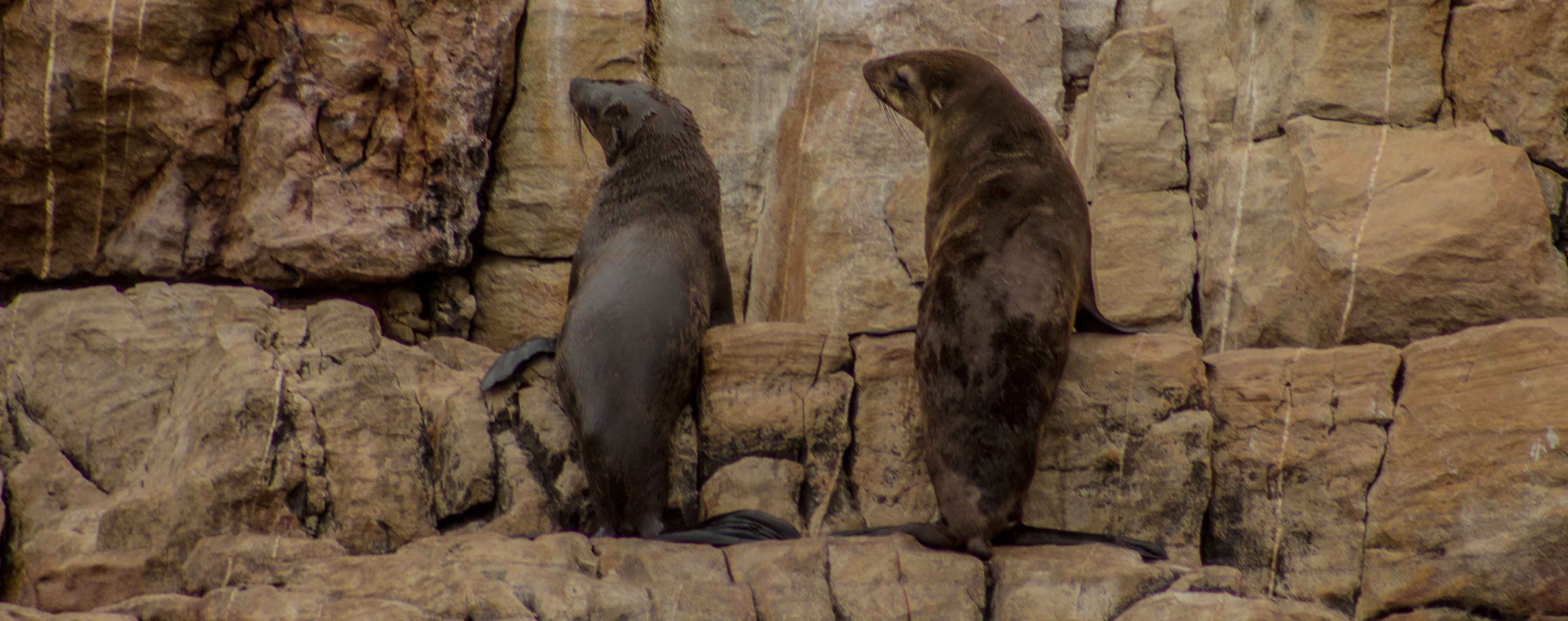The octopus (Greek Októpus meaning eight foot) is a cephalopod mollusk that belongs to the order Octopoda. This animal has 4 pairs of arms, 2 eyes, a beak within a mouth at the center of the arms, and has no internal or external skeleton (though some retain a remnant of a shell within the mantle). READ MORE
Perhaps more commonly known as a pumpkin pansy or the sea potato, the heart urchin Echinocardium cordatum is a beautiful irregularly oval urchin which is usually 4-5 cm in length, but can grow up to 9 cm. The body is covered in short spines, which are mostly directed backwards, unlike other sea urchins found in READ MORE
While walking the stretch of beach between Robberg Peninsula and Beacon Island I came across several dried out boxfish which spurred me to read up about this group of fish. Boxfish range in size from 15 – 46 cm and are generally solitary fish which spend their time on rocky and coral reefs, and grass READ MORE
A well-known sight along the beaches, in inter-tidal rocky pools, and in the hands of fishermen is redbait Pyura stolonifera. Although recognized on sight, many people may not know very much about this common animal. Redbait is a sea squirt which lives in intertidal rocky shores and subtidally down to 10 m deep. Sea squirts READ MORE
Situated on the magnificent Robberg Nature Reserve, a 3.9km peninsula that extends into the ocean on the southern side of Plettenberg Bay, is a colony of approximately 4000 Cape Fur Seals (Arctocephalus Pusillus). After the extermination of the original colony in the early 1900’s, the seals only returned in the early 90’s. The population gradually READ MORE
Killer whales, also referred to as Orca’s, from a shortened version of their scientific name Orcinus orca, are one of the world’s most well recognised cetaceans. This is largely due to the exposure they received from the ‘Free Willy’ films and the demand for them in captivity for performances. Unfortunately, none of these situations portray READ MORE
A few weeks ago we had a white Southern Right Whale calf passing through our bay with its mother. What does it mean to be a “white” whale? “Is this a problem for the calf?” Being white or an albino (latin word albus meaning white) happens when the skin is lacking pigment due to absence READ MORE
The sardine run, the largest biomass migration in the world, is even larger than the migration of the wildebeests. This is an annual migration of Pacific sardines (Sardinops sagax) from the Agulhas bank Northwards along the East coast of South Africa to the KwaZulu-Natal (KZN) area in winter. The Pacific sardine is a small pelagic, READ MORE







